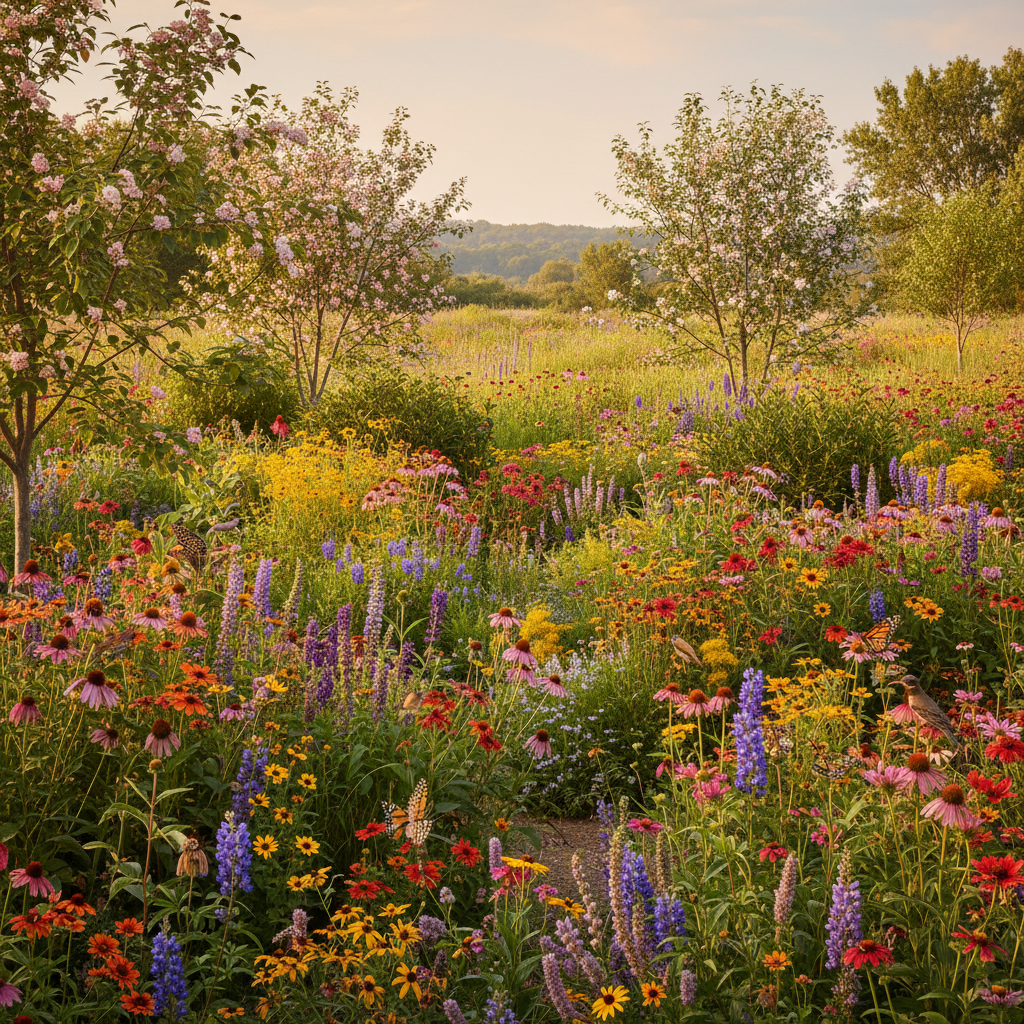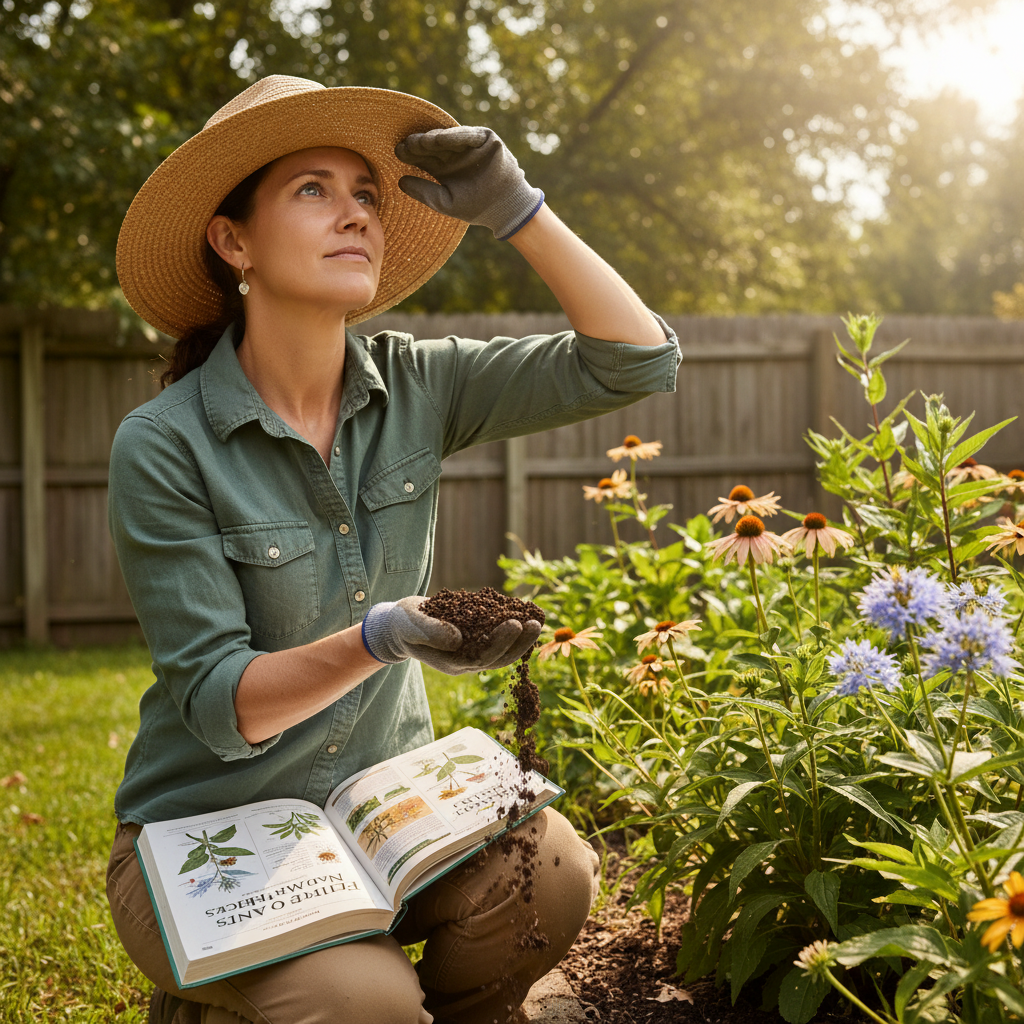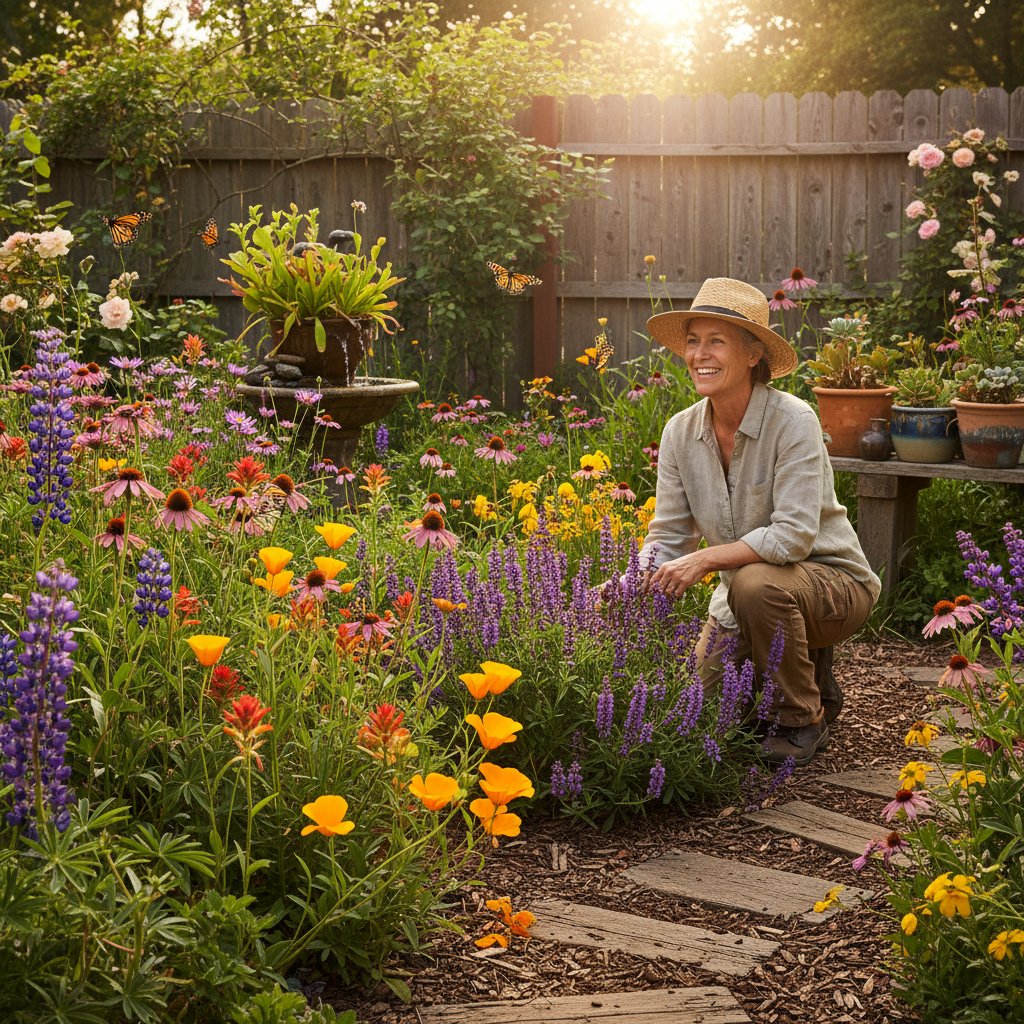
Table of Contents
Introduction
Imagine transforming your outdoor space into a vibrant sanctuary that not only beautifies your home but also nurtures the local environment. Gardening with native plants is becoming an increasingly popular choice for gardeners who want to create sustainable, eco-friendly landscapes. This approach invites nature’s resilience and diversity right into your garden, making it a lively, healthy space for both people and wildlife to enjoy. Wondering why so many gardeners are turning to native plants? Keep reading to uncover the many layers of benefits and insights that this green trend has to offer.
Gardening with native plants is more than just a trend—it is a movement toward reconnecting with the natural world and fostering environmental stewardship at a personal level. Native plants have evolved over thousands of years in specific regions, perfectly suited to the local climate, soil, and ecosystem. Because of this, they require less water, fewer fertilizers, and minimal pesticides compared to non-native species. This inherently makes native plant gardening an eco-conscious choice, reducing your garden’s environmental footprint while supporting local biodiversity. According to studies, gardens that incorporate native plants can significantly boost the presence of beneficial insects, birds, and pollinators, contributing to a thriving neighborhood ecosystem.
Beyond environmental advantages, gardening with native plants also presents economic and aesthetic rewards. Native plants often demand less maintenance, which translates into cost savings on water bills, gardening supplies, and labor. Additionally, these plants are adapted to flourish in your region, increasing their survival rate and reducing the frustration that comes with plant failure. From colorful wildflowers to majestic native trees and shrubs, the visual appeal of native gardens provides a unique sense of place and harmony with nature. This natural beauty can enhance your property’s curb appeal and offer year-round interest, blending seamlessly with the surrounding landscape.
Many gardeners today are motivated by the opportunity to create wildlife-friendly gardens that serve as crucial habitats amid urbanization and habitat loss. By incorporating native plants, you help support native bird species, butterflies, bees, and other pollinators essential for healthy ecosystems. Imagine your garden buzzing with vibrant life, from hummingbirds darting around native blossoms to caterpillars munching on leaves, each contributing to the cycle of nature. Addressing the reader’s growing concerns about sustainability, native plant gardening not only enriches personal well-being by reconnecting us with nature but also plays a small yet powerful role in combating global environmental challenges.
What You’ll Learn in This Guide
This comprehensive guide will equip you with everything you need to start and maintain a thriving native plant garden. Whether you’re a beginner or looking to deepen your ecological gardening knowledge, we’ll cover essential concepts, practical steps, and expert tips to ensure your success.
- Understanding the Basics of Native Plant Gardening: We’ll explain what native plants are, why they matter, and how their unique qualities benefit your garden and the environment. This foundation is key to appreciating the ecological importance behind your planting choices.
- Planning and Designing Your Native Garden: Learn how to assess your garden site, choose the right native species for your region, and design a garden layout that balances beauty, function, and habitat needs. We’ll guide you through the preparation process to set your garden up for long-term success.
- Maintenance and Care Tips: Native gardens require different care than conventional ones. Discover watering strategies, pruning techniques, and natural pest and disease management approaches tailored to native species that help keep your garden healthy and sustainable.
- Overcoming Common Challenges: Learn how to identify and manage invasive species, adapt to climate variability, and troubleshoot common issues specific to native gardening. We’ll provide practical solutions to keep your garden resilient and thriving despite external pressures.
As we delve deeper into this guide, you’ll gain a clear understanding of how to select native species suited to your garden’s conditions and how to source these plants responsibly. We will uncover design principles that embrace seasonal changes and habitat value, transforming your garden into a dynamic, living system. The maintenance advice offered will empower you to nurture your garden using eco-friendly methods that enhance plant health and wildlife attraction. Additionally, we’ll address how to face challenges like invasive species and climate change, ensuring your garden remains a sustainable oasis for years to come.
By the end of this guide, you’ll be equipped to create a beautiful, environmentally responsible garden that reflects the natural heritage of your region. The knowledge gained will help you cultivate not just plants but also a deeper connection to the land and support for the local ecosystem. Whether you have a patch of earth or an expansive yard, gardening with native plants can transform your space into a thriving habitat that benefits you, your community, and the planet.
Let’s embark on this green journey together and unlock the potential of native plants to create gardens that are not only stunning and sustainable but also a testament to nature’s enduring wisdom. Your native plant gardening adventure starts here—get ready to cultivate vibrant life right in your own backyard.

Continuing from the introduction to gardening with native plants, it becomes evident that embracing native flora in your garden can revolutionize your outdoor space in many profound ways. Native plant gardening is not merely about aesthetics; it is a journey towards creating a sustainable, ecologically supportive environment that benefits both you and the local ecosystem. This detailed discussion will dive deeper into the core benefits of native plant gardening and how to get started effectively. Whether you’re a seasoned gardener or a beginner, understanding these foundational components is essential to make informed decisions and cultivate a thriving native garden that flourishes year-round with minimal intervention.
Benefits of Gardening with Native Plants
The decision to garden with native plants carries numerous advantages that span environmental, economic, and aesthetic domains. Native plants naturally thrive in your local conditions because they have evolved in harmony with the regional climate and soil, making them a perfect choice for gardeners aiming to reduce workload and environmental impact. Beyond their resilience, native plants play a crucial role in supporting local wildlife, including pollinators such as bees and butterflies, birds, and other beneficial insects. This ecological harmony enhances plant health and biodiversity, creating a thriving garden ecosystem.
Economically, choosing native plants can lead to significant savings by reducing the need for excessive watering, fertilizers, and pesticides. Since these plants are adapted to the natural nutrient availability and pest pressures in your area, they require less chemical input and maintenance, which also benefits your health and the soil quality. Additionally, native plants often boast natural beauty that reflects the local landscape, contributing not only ecological but also aesthetic value. Their seasonal changes and diverse forms bring unique character and charm year-round.
Key Aspects of Native Plant Benefits
Understanding the critical benefits helps gardeners appreciate why native plants are a sustainable choice:
- Environmental Support: Native plants contribute significantly to supporting local ecosystems by providing food and habitat for wildlife. For example, planting native wildflowers can attract native pollinators, which are essential for healthy gardens and ecosystems.
- Water Conservation: Many native plants have deep root systems that improve soil structure and reduce runoff. These adaptations reduce the need for supplemental watering, helping you conserve water and lower utility bills.
- Lower Maintenance Costs: With native plants being adapted to local climate and soil, gardeners experience reduced expenses on fertilizers and pesticides. This reduction also promotes healthier soils and decreases environmental pollution.
- Aesthetic Appeal and Biodiversity: Native plants add unique visual interest reflecting regional characteristics. Their presence encourages biodiversity, making your garden a lively and dynamic outdoor space that changes with the seasons.
Getting Started with Native Plant Gardening
Embarking on your native plant gardening journey requires careful planning and thoughtful site assessment. Knowing your garden’s specific conditions, such as soil type, sunlight exposure, and existing vegetation, will guide you to choose the most appropriate plants that will thrive. Planning your garden with intention also means considering how native plants interact with each other concerning spacing, water needs, and seasonal interest. Proper design maximizes the ecological benefits while ensuring your garden remains visually appealing.
Another critical part of starting involves sourcing quality native plants from reliable suppliers. Local nurseries and native plant societies often provide region-specific species suited to your environmental conditions. Incorporating seasonal interest ensures your garden remains vibrant through different times of the year, while thoughtful arrangements create microhabitats for local fauna. Planting native ground covers, shrubs, and trees strategically enables you to build a garden that is both functional and enchanting.
Important Considerations for Native Plant Gardening
When initiating your garden, keeping these considerations in mind will increase your chances of success:
- Site Evaluation: Assess soil type and sunlight patterns across your garden. Knowing whether your soil is sandy, clayey, or loamy determines the plants that will perform best. Sun exposure governs plant placement, with sun-loving species needing full daylight and shade-tolerant ones thriving under tree canopies.
- Choosing Plant Arrangements: Create plant groupings that mimic natural ecosystems for both beauty and functionality. Mixing heights, textures, and blooming periods fosters biodiversity and attracts beneficial wildlife, enhancing garden resilience.
- Seasonal Interest and Habitat Needs: Plan for year-round appeal by including plants that flower and fruit in different seasons. This strategy sustains pollinators and birds throughout the year, ensuring a lively, thriving ecosystem.
- Sourcing Native Plants: Use reputable local nurseries, native plant societies, and seed exchanges to obtain regionally appropriate species. These sources often provide plants that are genetically adapted to your area, improving establishment and survival rates.

Conclusion
Gardening with native plants presents a rewarding opportunity to create an outdoor space that is not only beautiful but also environmentally responsible. By choosing native species, you support local ecosystems, providing essential habitat and food sources for wildlife such as birds, bees, and butterflies. Native plants naturally thrive in your region’s climate and soil conditions, which reduces the need for excessive watering, pesticides, and fertilizers, ultimately conserving valuable resources and reducing garden maintenance costs. Their diverse appearances and seasonal variations offer year-round visual interest and deepen your connection to the natural heritage of your area.
To embark on your native gardening journey, begin with a thorough assessment of your garden’s conditions including sunlight exposure, soil type, and current vegetation or wildlife presence. Understanding your garden environment helps you select native plants best adapted to thrive in those conditions. Source plants from reputable local nurseries or native plant societies to ensure you’re planting species appropriate for your region. Incorporate a variety of plant types such as ground covers, shrubs, trees, and wildflowers, with a focus on pollinator-friendly species to boost biodiversity. Thoughtful garden design that considers seasonal changes and structural habitat needs will not only elevate aesthetic appeal but also attract beneficial wildlife.
After planting, maintain your garden with mindful watering—especially during establishment—mulching to conserve soil moisture and control weeds, and using natural pest and disease management techniques. Stay vigilant against invasive species by identifying and removing them proactively, and adapt your maintenance practices to changing climate conditions to keep your garden resilient. Over time, your native plant garden will flourish as a sanctuary that nurtures both plants and wildlife, while providing a serene, sustainable retreat for you and your community.
Choosing to garden with native plants is a powerful way to contribute to environmental conservation on a local scale. This guide has equipped you with the knowledge to start, design, and care for your native garden effectively. For gardeners just beginning, additional resources like gardening tips for beginners can provide practical advice to boost your confidence and gardening skills. Remember, the plants you nurture become part of a larger ecosystem, fostering sustainability and vibrant natural heritage that benefits everyone.
Frequently Asked Questions
-
What are native plants?
- Native plants are species that naturally occur in a specific region and ecosystem without human introduction.
-
Why should I garden with native plants?
- They support local wildlife, require less maintenance, and are adapted to local climate conditions.
-
How do I choose native plants for my garden?
- Consider your region’s climate, soil, and the plants’ habitat needs.
-
Can native plants survive drought?
- Many native plants are drought-tolerant once established, but watering may be needed during dry periods.
-
Are native plants resistant to pests?
- Native plants generally have natural resistance but monitoring and occasional care can prevent pest issues.
